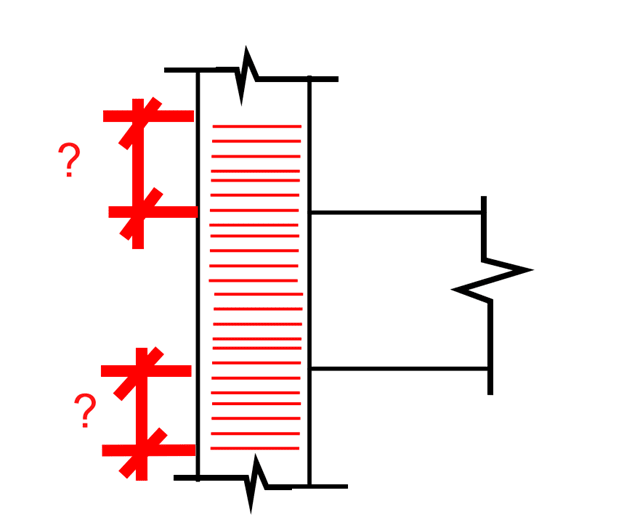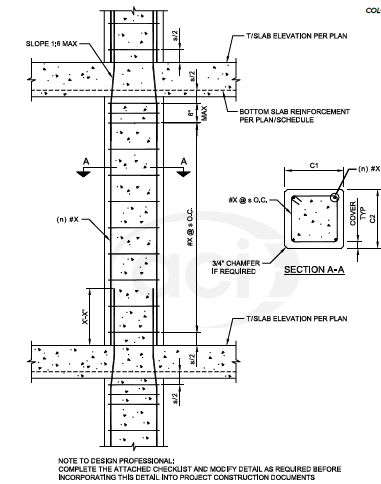wayne_dwops
Structural
I am in the process of designing a concrete beam-column joint that is not intended to be a part of the seismic or lateral force resisting system of a building. This joint will be transferring shear forces due to moment into the column and of course the vertical shear in the beam into the column.
While not related to the reason I am posting, my search led me to this post as I needed some clarification on what ACI 318-14 15.2.2 meant by "shear resulting from moment transfer". The report ACI 352R-02 mentioned in the link confirmed my suspicions that the "shear" should be taken as the difference of the tensile component of the integrated beam assuming a balanced cross section, and the shear in the column at the inflection point.
I feel I have successfully designed the transverse reinforcing within the joint, however I am unsure how far I should extend my transverse reinforcing past the joint. ACI 352R-02 references ACI 318-02 21.4.4.4 which explicitly provides this length (max of depth of beam at joint face, 1/6 clear span of the member, or 18 in). I am not seeing an equivalent section in ACI 318-14 Chapt. 25 or 10. As my column is only experiencing this moment and no deliberate lateral in plane loads, my critical section shear is simply due to the moment in the column and remains unchanged over the length of the column. Furthermore, the section in ACI 318-02 stipulates that the length they provide is based on potential inelastic lateral displacements, which I would assume is reserved for special concrete moment frames. I am hoping that someone knows of a code section or design theory I am missing...

While not related to the reason I am posting, my search led me to this post as I needed some clarification on what ACI 318-14 15.2.2 meant by "shear resulting from moment transfer". The report ACI 352R-02 mentioned in the link confirmed my suspicions that the "shear" should be taken as the difference of the tensile component of the integrated beam assuming a balanced cross section, and the shear in the column at the inflection point.
I feel I have successfully designed the transverse reinforcing within the joint, however I am unsure how far I should extend my transverse reinforcing past the joint. ACI 352R-02 references ACI 318-02 21.4.4.4 which explicitly provides this length (max of depth of beam at joint face, 1/6 clear span of the member, or 18 in). I am not seeing an equivalent section in ACI 318-14 Chapt. 25 or 10. As my column is only experiencing this moment and no deliberate lateral in plane loads, my critical section shear is simply due to the moment in the column and remains unchanged over the length of the column. Furthermore, the section in ACI 318-02 stipulates that the length they provide is based on potential inelastic lateral displacements, which I would assume is reserved for special concrete moment frames. I am hoping that someone knows of a code section or design theory I am missing...


